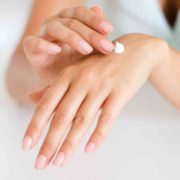 The pursuit of beautiful skin is never-ending, and with the Korean skincare routine craze not showing any signs of dying down, beauty companies are churning more and more products for healthy and radiant skin.
The pursuit of beautiful skin is never-ending, and with the Korean skincare routine craze not showing any signs of dying down, beauty companies are churning more and more products for healthy and radiant skin.
Before you slather seven or more products on your skin though, it pays to read the list of ingredients that make them work. You might even see some of the most bizarre ingredients that you never thought could be put on your face. Here are some of them:
01 Activated Charcoal (Carbon)
In the field of medicine, activated charcoal is used in poisoning cases, where a large dose is fed to the patient to absorb poisons from the body before they can enter the bloodstream. In the field of beauty, meanwhile, it is becoming one of the trendiest skincare ingredients for its toxin-absorbing, oil-napping, and dirt-grabbing uses. It contains natural properties that act like a magnet, drawing impurities such as make-up and dirt out from the skin’s surface. Benefits of charcoal include a balanced oil production and an increase in skin’s radiance over time.
02 Yeast (Beta Glucan)
It may be more popularly known as the ingredient used to make bread rise, but yeast is also used for skincare products for its fibroblasts — a cell type that generates collagen. Jodie Patterson, founder of her own beauty line, Georgia by Jodie Patterson, and cofounder an e-commerce site that focuses on beauty for every skin tone and hair texture, said yeast is “like the fountain of youth.” And she’s not wrong! It does everything from firming skin to calming irritation to correcting hyperpigmentation, all thanks to its antioxidants, B vitamins, proteins and minerals.
03 Slime Mucus (Mucin)
Don’t just write off the slime that snails secrete as gross. Mucin, which can be found in a snail’s mucus, has significant protective and nourishing qualities that beauty and skincare brands are now using for serums and facial essences. It’s effective in reducing the effects of photoaging, smoothing out scars, and stimulating collagen thanks to its chock-full of elastin and glycolic acid.
04 Sheep Sebum (Lanolin)
Just like the human body produces sebum that coats, moisturizes, and protects human skin, a sheep’s wool produces lanolin that soothes, heals, and moisturizes sheep’s skin. According to Liveabout.com, the lanolin is extracted from the wool after the sheep are sheared; then, it is refined and purified before being used in products such as lip and body lotions, balms, butters and creams.
05 Cochineal Beetles (Carmine)
Whether you own a tube of red lipstick or not, we’ve all put a dash of color on our lips at least once — which means, we’ve also smoothed some powdered beetle remains on them. Carminic acid, which is the key ingredient in one of the most popular red dyes in the world…derives from the crushed, dried bodies of cochineal beetles. Yikes, but who cares about that when it comes with the excellent benefit of being chemical-free?
06 Bone Marrow (Glucosamine)
You read that right. According to Dermstore.com, the oil found in bone marrow is flush with beneficial acids and anti-inflammatory properties. Used in face creams and moisturizers, glucosamine penetrates the skin easily and forms a protective barrier that keeps the nourishing moisture in. It even helps to reduce the appearance of wrinkles.
07 Placenta
We’re all familiar with this one, having learned about it in our Biology class. But just to refresh the memory, a placenta is the organ that develops in both women’s and mammals’ uterus during pregnancy. A placenta is also rich in proteins, minerals, and vitamins that help hydrate and condition the skin. Purified animal and human placenta are now being used in skincare products like topical creams and serums to diminish wrinkles and stimulate collagen production.






